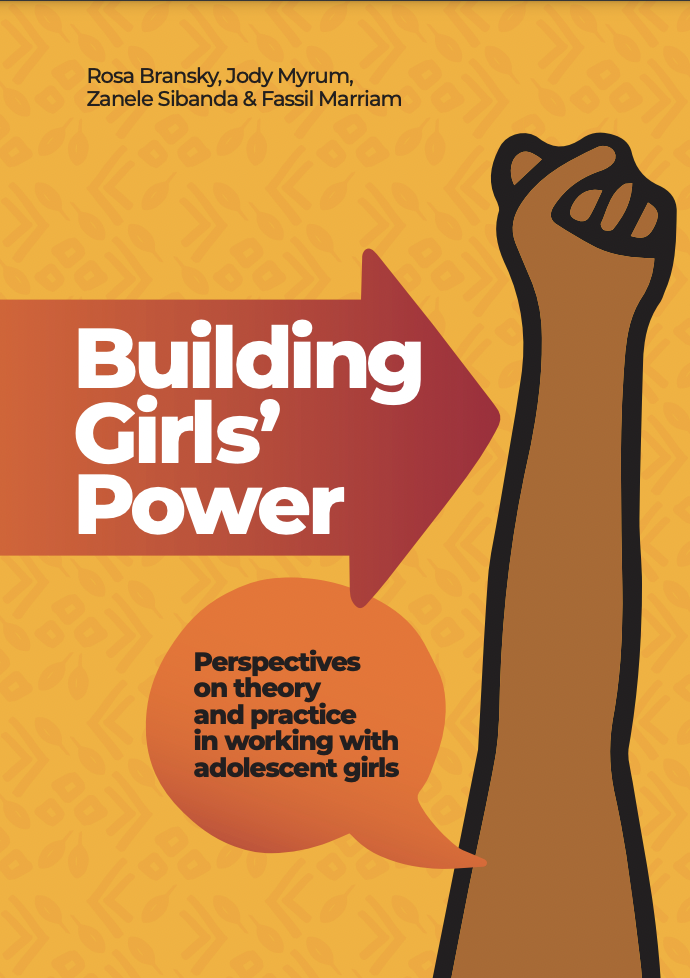
One of the most thought-provoking reads for us in March came from a report published by Purposeful on Building Girls’ Power: Perspectives on theory and practice in working with adolescent girls.
The report highlights how the typical development narratives about adolescent girls fall short. They either portray girls as hapless victims who need our protection, or they suggest that if we just give girls the right information — fill them with the right empowerment content — they can independently escape poverty and save their families and communities, too.
Neither of these narratives “are able to fully grasp the paradoxical reality of the deep power all girls hold in the context of compounding systems and structures of oppression.”
We need to hold in our minds that two things are true: girls live “on the frontline of injustice” and “to be a girl is to resist.”
The question to ask is not whether or how powerful girls are, but rather, “how do we build power with girls?”
The report notes that although development actors do talk a lot about power, in reality, empowerment programs actually do little to address “the power structures that keep girls from their own innate power.” We need programs that help girls build power with others while acknowledging and working towards transforming systems of oppression.
Here are three examples of practices for building power with girls offered up in the report:
- Solidarity and collective power, e.g. through safe spaces that allow girls to engage with others in collective resistance (not merely gather for functional development purposes);
- Challenging hegemonies of power, e.g. by supporting girls to understand and question how their lived experiences are linked to broader systems of oppression;
- Power and resistance, e.g. by supporting girls’ autonomous organizing.
(In the education space, this report reminded us of many of the lessons that shine through in a book published in January on Life Skills Education for Youth. One of the resounding themes of the book is that teaching life skills can help marginalized adolescents in particular, but it should not put the onus of overcoming marginalization squarely on their shoulders.)
The report also points to a companion toolkit with activities used to open up conversations about power with adolescent girls, and a series of program materials that can help organizations act on what they hear from girls.
Nothing reminded us more this month of the duality that girls are on the frontlines of injustice and resistance than the Taliban reversing its decision to allow Afghan girls back into school beyond 6th grade. In the face of this, Afghan girls are feeling increasingly hopeless and depressed. “‘Many feel as if they have lost control of their dreams, goals – their lives,’ says psychologist Rohullah Rezvani.” But they are also finding their own ways to resist, as beautifully captured in the words of Afghan girls in this episode of The New York Times Daily Podcast.
In case you missed it, this month Laura Moscoviz and David Evans from the Center for Global Development published a working paper and blog reviewing the evidence of the COVID-19 pandemic’s impact on learning loss and student dropout. Based on studies from a total of 27 countries, they find that: (1) learning loss was real, but not as bad as some predictions; (2) the poorest children generally lost out on 50% to 100% more learning than other children; (3) more adolescents are dropping out of school and cutting their education short (in some countries this is more pronounced for girls than boys). “these findings suggest that education systems may wish to target efforts to bring students back to school and to remediate student learning to those who need it the most: adolescent students in the case of dropouts and the poorest students in the case of learning.”
Another great source of information is this series of policy briefs from the Population Council on the Gendered Effects of COVID-19 School Closures in Pakistan, Kenya, India, and Bangladesh. You’ll find familiar themes related to the digital divide, learning loss, mental health effects, and more severe effects on rural adolescents. But read the briefs in detail for important contextual differences and recommendations by country.
Hear what a group of Echidna Global Scholars have to say when it comes to addressing one pandemic challenge — ensuring young mothers return, remain, and learn in school. Also read Grace Muriithi, Rachel Jones, and Valentina Brailovskaya from IDInsight’s review of lessons from Kenya on supporting teen mothers to return to school.
Speaking of teen mothers, don’t miss IPA’s recent evidence synthesis report on Improving Outcomes for Young Children and Parents in Key Stages of Development. It looks at how to improve outcomes for children aged 0-3 and their caregivers, highlighting how to support two generations — both children and their caregivers — with particular emphasis on adolescent caregivers.
Elsewhere, it’s encouraging to see how engaging fathers in nutrition and parenting interventions bolsters child outcomes. We were also excited to see evidence that a Prenatal Mindfulness Program Improves Stress Response in Infants. This is an important finding for the potential of two generation solutions that can support caregiver outcomes and their children. It also reminds us that small steps we take to care for ourselves today can have ripple effects for others — as important a reminder now as ever.
